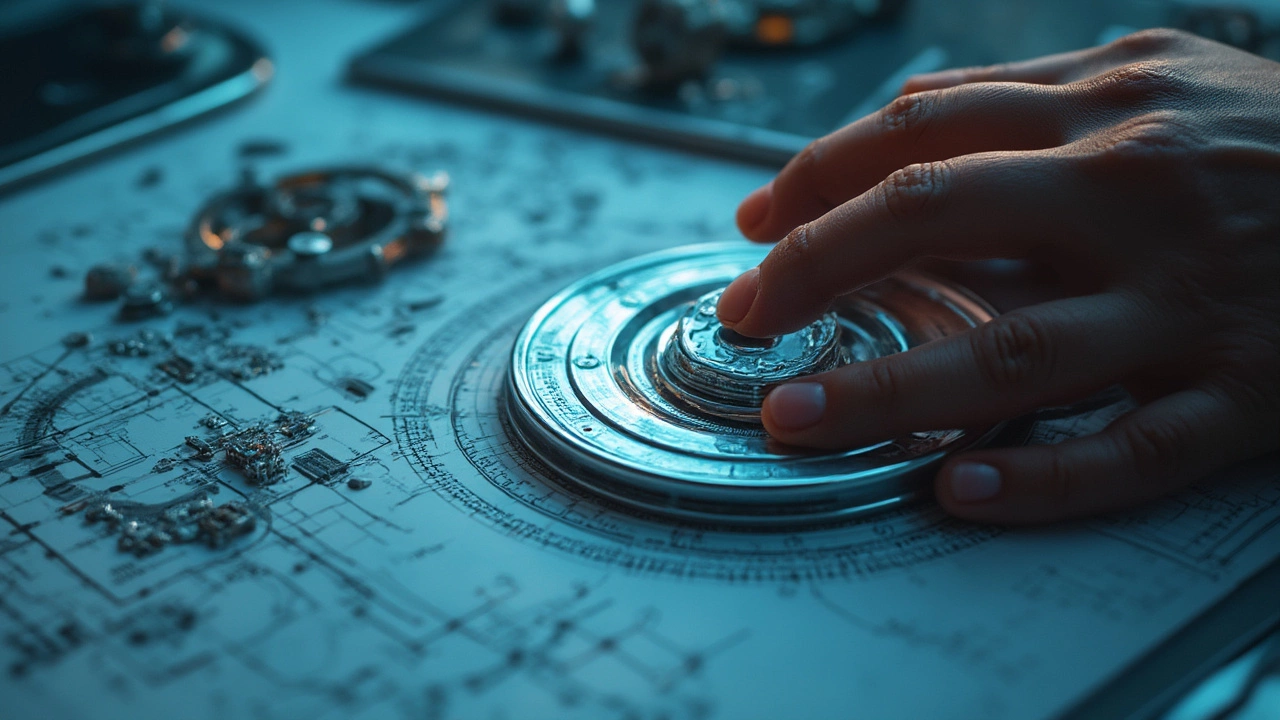Here’s a riddle most people get wrong: you’d think the toughest metal is the stuff found in superhero suits or space rockets, right? But grab a standard steel hammer and whack away—it’s not going to budge much, but it isn’t the world’s strongest. In fact, you probably walk past something stronger every day in a lightbulb filament or chipped drill bit. When we talk about the ‘strongest metal on the planet,’ it’s not about muscle-flexing, it’s about what that metal can take—tension, pressure, heat—without giving up. This isn’t just an academic curiosity. Picking the right metal means your jumbo jet engines, city skyscrapers, dental implants, and even electronics stand up to chaos — instead of crumbling, burning or snapping. Ready to find out what the real king of strength is and why? I’ll break it all down in a way that sticks.
Defining 'Strength': What Does Strongest Metal Actually Mean?
Before we answer the big question, let’s clear up the confusion: ‘strong’ doesn’t mean just one thing in the world of metals. If you ask a builder, a jeweller, or a nuclear engineer, you’re going to get wildly different answers. Scientists use several ways to measure ‘strength,’ and what’s best often comes down to the job at hand. Check out how it unfolds:
- Tensile Strength: Measures how much pulling (stretching) force a metal can take before snapping. Think of this as the tug-of-war champion trait.
- Compressive Strength: Looks at how much squeezing a metal can take before it gets crushed. Bricks and concrete are heroes here, but some metals are no slouch.
- Yield Strength: This tells us how much a metal can be strained (pushed, pulled, bent) before it gives in and becomes permanently bent out of shape.
- Hardness: Not the ability to avoid heartbreak, but how resistant the metal is to scratches, dents or dings.
- Impact Strength: What happens if you whack it suddenly? This tests the metal’s ability to handle sharp shocks.
Now, when scientists talk about the ‘strongest’ metal, they often mean the highest tensile strength. That’s because, for most jobs, we care about metals that don’t snap, bend, or crumble under real-world stress. But, there’s more than one winner, depending on which property you need the most. For the record, tensile strength is usually measured in megapascals (MPa) or pounds per square inch (psi) – won’t bore you with formulas, but basically, the higher the number, the stronger the metal.
Here’s a simple
| Property | Definition | Common Test Metal |
|---|---|---|
| Tensile Strength | Maximum pull force | Tungsten |
| Hardness | Scratch/dent resistance | Chromium |
| Yield Strength | Deformation resistance | Titanium |
| Impact Strength | Shock absorption | Maraging Steel |
So, if you’re comparing metals at home, look at which kind of ‘strength’ actually solves your problem. Ever heard of the ‘Mohs scale’? It’s a system for hardness mostly used in geology—diamonds sit right on top. That’s why the hardest, the toughest, the most unbreakable aren’t always the same medal winners. This is where things get spicy: what comes next isn’t just chemical trivia—it can save lives and billions on repairs.

The Strongest Metals: Tungsten, Titanium, and Alloys Unmasked
Now for the stars of the show. When labs, engineers and industries weigh in, the conversation keeps circling back to these names: tungsten, titanium, chromium, and their souped-up cousins—metal alloys like steel, Inconel, and maraging steel. If you want a medal for pure, unfiltered strength, tungsten takes the crown. Here’s why:
- Tungsten (chemical symbol ‘W’) boasts the highest tensile strength of any pure metal. At room temperature, you’re looking at a tensile strength up to 1510 megapascals (MPa). Not only is tungsten mighty, but it also keeps its strength even as temperatures get seriously wild—think lightbulb-hot (3,422°C melting point!). Small wonder it’s popular in rocket engine nozzles and armour-piercing military rounds. Tungsten’s so dense it could double as a dumbbell!
- Titanium is up next. Not quite as tough as tungsten on paper, with a tensile strength around 950 MPa for pure titanium, but it’s roughly half as heavy. That’s why it’s everywhere from jet engine blades to hip replacements—super strong, super light. When you crush it into alloys, like Ti-6Al-4V (‘titanium grade five’), strength jumps considerably while weight stays low. Did you know the Mars Rover rolls around on titanium wheels?
- Chromium wears the crown for hardness. We’re talking Mohs scale 8.5 (diamonds are maxed out at 10). It shrugs off scratches and tarnish, making it the must-have for plating shiny car parts and kitchen gadgets.
- Then you get alloys—mixes designed in labs for killer combinations, like hardness, lightness, heat resistance, and longevity. High-carbon steel, maraging steel (used in F1 cars and the aerospace world), and Inconel (famous in jet turbine blades) build strength far beyond what their main metal could do solo.
Here’s a quick side-by-side for nail-biting comparison:
| Metal/Alloy | Tensile Strength (MPa) | Density (g/cm³) | Main Uses |
|---|---|---|---|
| Tungsten | 1510 | 19.3 | Drill bits, filaments, missiles |
| Titanium | 950 | 4.5 | Aircraft, implants |
| Chromium | 418 | 7.19 | Plating, steelmaking |
| Maraging Steel | 2000+ | 8.0 | Rockets, sports gear |
So, which wins the heavyweight belt? Pure tungsten—on paper. But in the real world, most jobs call for alloys or ‘engineered’ metals, tuned to be super-strong, ductile (bendy without breaking), or feather-light. There’s a reason bridges aren’t made out of pure tungsten—it’s expensive, brittle, and tough to work with.
Dive deeper, and you’ll see how humble tweaks—adding vanadium, nickel, molybdenum, or chromium—turn basic steel into a modern marvel like Inconel (alloy 718), which survives the throat-melting heat of turbojets. Industry legend Dr. Gary Carder, quoted in Materials Performance magazine, once put it best:
"Successful engineering isn’t about using the world’s strongest metal—it’s matching the metal’s strengths to your challenge."
One more curious bit: Some of the world’s strongest metals aren’t just rare—they’re expensive and fiendishly difficult to shape. Tungsten’s notorious for shattering if you hit it just wrong. That’s why the tools you use at home, and the planes you fly in, are almost always alloys—never pure metal. Even Superman would struggle to bend tungsten, but your mechanic’s wrench? That’s probably chrome-vanadium steel: strong, hard, and not as pricey as gold.

How Super-Strong Metals Shape Everyday Life and the Future
If you think the story ends with, “Tungsten’s the boss, end of,” you’d be missing out on how these metals are sneaking into all corners of our lives—and what’s coming next. This isn’t just science trivia. We depend on super-strong metals every single day—even if we never see them.
- Tough Tech: That smartphone in your pocket? The charging pins and micro-wires are often gold-and-tungsten deposits, designed to take years of charge cycles and rough handling, while weighing next to nothing.
- Buildings that Last: Ever stared up at a skyscraper feeling that weird mix of fear and awe? You can relax. Modern structural steels, like ASTM A514, combine iron with tiny amounts of chromium, molybdenum, and carbon to handle storms, earthquakes and more, all while staying flexible enough not to snap from stress.
- Space Age Materials: Spacecraft re-entering Earth’s atmosphere face temperatures hot enough to melt rock. Tungsten tiles shield their noses and edges from burning up.
- Life Insurance for Medicine: Titanium’s friendliness with human tissue (it doesn’t rust, react or poison), plus its strength, made it a game-changer for bone screws, plates, and new joints. Hip replacements with titanium last for decades, and there’s little risk of allergic reaction.
Now, for a look ahead—ultra-strong metals and their hybrids are already shaping the next era of tech. Engineers are using 3D printing to blend metals like tungsten with carbon and ceramic fiber, making parts for jet engines that couldn’t be built before. A recent study by the University of Liverpool (2024) found that by infusing tungsten with tiny amounts of rhenium, it could withstand neutron bombardment for future nuclear fusion reactors—basically, reactors that promise nearly limitless clean energy. We’re talking metals handling pressures and temperatures that would make everything else crumble.
Want a tip for the DIY lovers? If you’re after strong and cheap, look for high-carbon steel. Tools marked “Cr-V” mean chrome-vanadium—excellent all-rounders. For precision, tungsten carbide drill bits will slice through anything but the kitchen sink (don’t try this at home though). And if you’re ever tempted to buy an “unbreakable” titanium gadget online—remember, it’s the alloys that matter. Pure titanium can be strong but sometimes it’s too soft for hard knocks. Always check the grade.
One last nugget: as electric cars, quantum computers, reusable rockets, and medical miracles keep pushing what’s possible, the world is betting on new metal blends—some that haven’t even been named yet. The next ‘strongest metal’ might be grown atom by atom in a lab, and one day, your grandkids will be amazed we managed with mere tungsten and steel. If you remember nothing else, just know: the answer to ‘what’s the strongest metal on the planet?’ is more than a trophy—it’s the reason your world holds together as it hurtles forward at 67,000 miles an hour around the sun.




